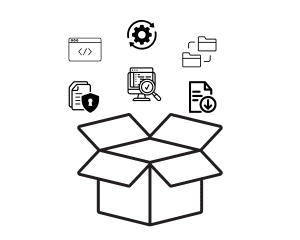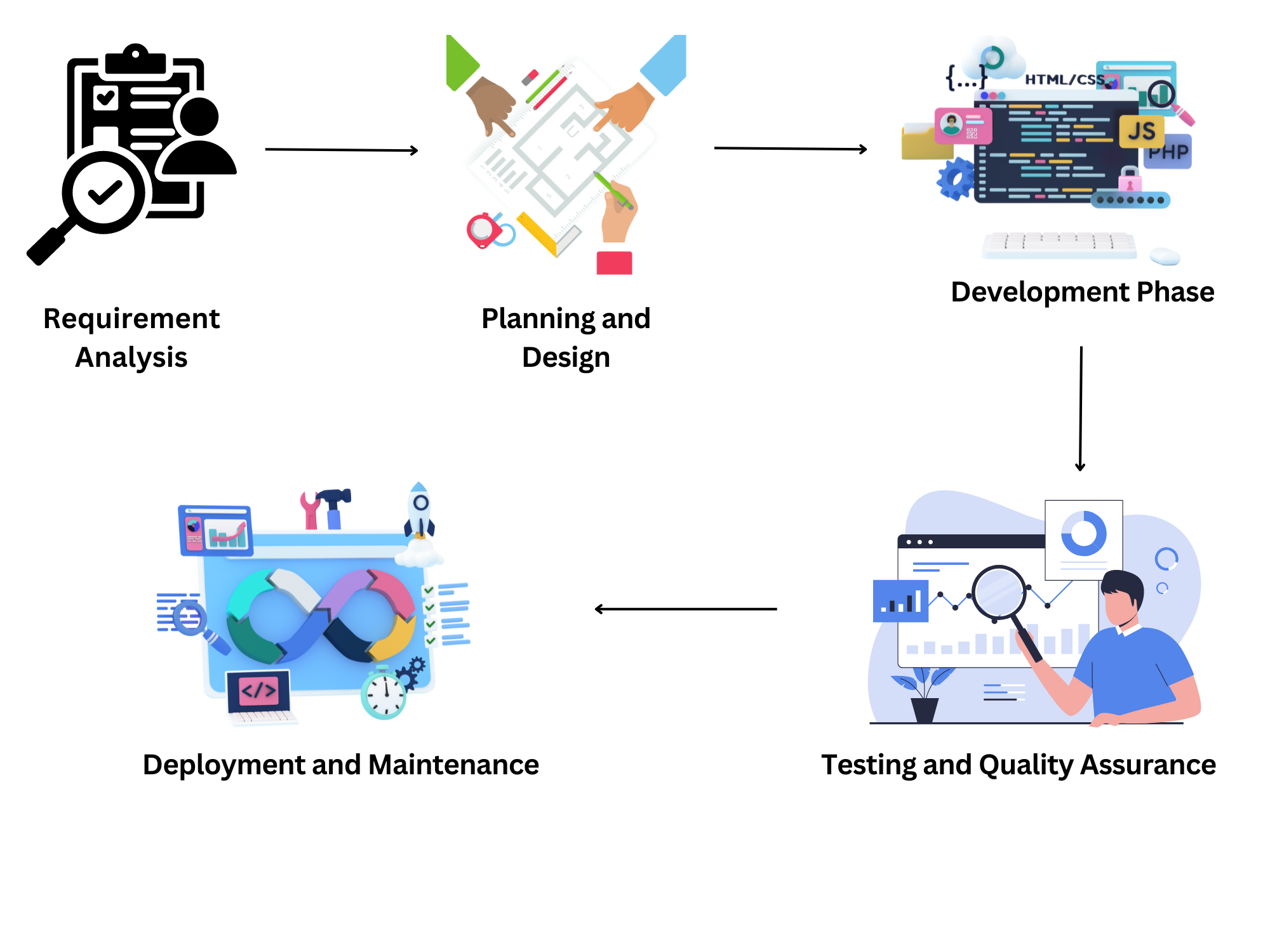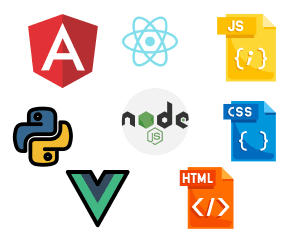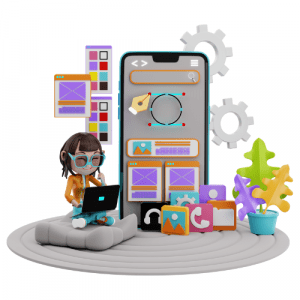 In the dynamic landscape of Australian business, every organization is a unique entity with its own set of goals, challenges, and operational requirements. Off-the-shelf software solutions, while convenient, often fail to address the specific needs of Australian businesses. In this era where innovation is paramount, and adaptability is the key to success, custom software development emerges as the solution of choice. Custom software solutions ensure that Australian businesses receive tailor-made applications precisely crafted to their specifications, allowing for ongoing refinement and improvement. Australian companies can significantly benefit from offshore development, such as partnering with firms in India for custom software solutions. This collaboration allows them to tap into a vast pool of skilled IT professionals, reduce development costs, and gain access to round-the-clock development cycles, leading to faster project delivery and increased competitiveness in the market.
In the dynamic landscape of Australian business, every organization is a unique entity with its own set of goals, challenges, and operational requirements. Off-the-shelf software solutions, while convenient, often fail to address the specific needs of Australian businesses. In this era where innovation is paramount, and adaptability is the key to success, custom software development emerges as the solution of choice. Custom software solutions ensure that Australian businesses receive tailor-made applications precisely crafted to their specifications, allowing for ongoing refinement and improvement. Australian companies can significantly benefit from offshore development, such as partnering with firms in India for custom software solutions. This collaboration allows them to tap into a vast pool of skilled IT professionals, reduce development costs, and gain access to round-the-clock development cycles, leading to faster project delivery and increased competitiveness in the market.
What is Custom Software Development?
 Custom software development can be simply described as the creation of software applications that are uniquely designed to meet the specific needs of individual users or organizations. Unlike off-the-shelf software that is designed for a wider audience with predetermined features, custom software is built from scratch to address specific problems and streamline workflows. Understanding the custom software development process provides insight into the meticulous approach taken to create bespoke solutions.
Custom software development can be simply described as the creation of software applications that are uniquely designed to meet the specific needs of individual users or organizations. Unlike off-the-shelf software that is designed for a wider audience with predetermined features, custom software is built from scratch to address specific problems and streamline workflows. Understanding the custom software development process provides insight into the meticulous approach taken to create bespoke solutions.
Here’s a comprehensive breakdown of the process:
- It all begins with a thorough analysis of the requirements of the user or the Australian organization. This involves defining the problem that the software aims to solve, identifying desired functionalities, and determining how it will integrate with existing systems.
- With a clear understanding of the requirements, a team of developers creates a blueprint for the software, outlining its architecture, user interface, and functionalities. Subsequently, they proceed to write the code and develop the application.
- Once the development phase is complete, the software undergoes rigorous testing to ensure it functions as intended and is free of bugs. Following successful testing, the software is deployed for use.
Enhanced Efficiency
Custom software tailored for Australian businesses can turbocharge efficiency by automating tasks and smoothing out workflows, cutting down on manual labor and errors. It’s like having a bespoke toolbelt that perfectly fits your unique operations, slashing redundant tasks and streamlining processes. By syncing seamlessly with existing systems and data streams, these custom solutions crank up efficiency even more, making sure everything works together like a well-oiled machine.
Improved User Experience
With custom software, businesses can deliver a top-notch user experience. By listening closely to user feedback and preferences, tailored solutions craft interfaces that are easy on the eye and a breeze to use, boosting productivity and satisfaction. Plus, personalized training and support ensure that users are riding the custom software wave like pros, maximizing its benefits every step of the way.
Competitive Advantage
Custom software isn’t just a tool; it’s a secret weapon for Australian businesses looking to get ahead in the game. By tailoring functionalities to address specific challenges and opportunities in their industry, these solutions can give businesses a leg up on the competition. Whether it’s offering unique services or rolling out innovative features, custom software gives Australian businesses the flexibility and agility they need to stay on top of the pack.
Scalability and Security
Custom software grows with Australian businesses like a gum tree, scaling effortlessly to handle increased workloads and data volumes without breaking a sweat. And with security measures tailored to Australian needs and regulations, these solutions are like a digital fortress, guarding against cyber threats and data breaches. Regular maintenance and updates keep everything shipshape, ensuring ongoing protection and compatibility with the latest tech and rules.
Challenges and Considerations for Businesses
Of course, custom software development isn’t all sunshine and surf. Australian businesses need to be aware of a few challenges:
- Cost and Time: Developing custom software can be a hefty investment, both in terms of money and time.
- Project Management: Clear communication and effective project management are crucial to keep things on track during the development process.
- Technical Expertise: Australian businesses might need to bring in skilled developers or partner with a software company to bring their custom solution to life.
Difference Between Custom Software and Off-the-shelf Software
Custom Software
 Tailored Solutions:
Tailored Solutions:
Custom software development in Australia involves crafting solutions specifically designed for individual users or organizations, finely attuned to their unique requirements, workflows, and business processes. This approach ensures that the software aligns closely with the user’s operations, maximizing efficiency and effectiveness.
Features:
Tailored software is packed with functionalities carefully designed to tackle the user’s specific problems and challenges. These features are customized to meet the exact needs of the user and seamlessly integrate with their existing systems and processes, providing a cohesive solution.
Development:
Creating custom software involves a thorough process, starting with an in-depth analysis of requirements to fully understand the user’s needs and objectives. This process progresses through design, coding, testing, and deployment phases, ensuring that the final product meets the user’s expectations and requirements.
Cost:
Custom software development typically requires a higher upfront investment compared to off-the-shelf solutions due to the bespoke nature of the development process. Although the initial cost may be higher, the long-term benefits such as enhanced efficiency, improved user experience, and competitive advantage frequently outweigh this initial investment.
Benefits:
Custom software offers several benefits for Australian businesses, including increased efficiency through tailored functionalities, improved user experience with user-centric design, competitive advantage through unique features, better scalability to accommodate business growth, and enhanced security with customized measures.
Off-the-shelf Software
 Ready-made Solutions:
Ready-made Solutions:
Off-the-shelf software refers to pre-developed applications available for purchase and use by a general audience. These products are typically designed to address common needs within a particular industry or task, offering standard functionalities.
Features:
Off-the-shelf software comes with a set of features and functionalities catering to the general requirements of users within a specific market or industry. While these features may meet the needs of many users, they may not perfectly align with the unique requirements of individual Australian organizations.
Availability:
Off-the-shelf software is conveniently accessible for purchase or download, facilitating swift acquisition and deployment. Users can typically access the software through online platforms or retail stores, with minimal setup required to start using the application.
Cost:
Off-the-shelf software is generally more cost-effective compared to custom solutions, as it involves one-time purchase fees or subscription models. Although the initial cost may be lower, users could face additional expenses for ongoing support, updates, and maintenance over time.
Drawbacks:
Despite its affordability and accessibility, off-the-shelf software may have limitations regarding flexibility and customization. Users may find that the software does not perfectly match their specific needs and requirements, leading to inefficiencies. Additionally, off-the-shelf software may include features that are not relevant or useful to Australian businesses, resulting in unnecessary complexity.
Software Development Process

Requirement Analysis
The foundation of any successful software development project is requirement analysis. This stage involves gathering and analyzing all necessary details about the software. Here’s an overview of the stages involved:
- Problem Definition: Identifying the problem that the software aims to solve.
- User Needs: Determining who will use the software and understanding their specific needs and expectations.
- Features and Functionality: Defining essential functionalities and distinguishing them from nice-to-have features.
- Technical Requirements: Identifying any hardware, software, or compatibility needs.
Through meetings, interviews, and documentation, the development team gains a clear understanding of the software’s purpose and functionalities.
Planning and Design
Armed with a solid understanding of the requirements, the team moves into the planning and design phase:
- Software Architecture: Defining the overall structure of the software, including how different components will interact.
- User Interface (UI) and User Experience (UX) Design: Crafting a user-friendly interface that is intuitive and enhances the user experience.
- Development Roadmap: Creating a high-level plan outlining development stages, timelines, and resource allocation.
This stage translates abstract requirements into a concrete blueprint for the software’s development.
Development Phase
This is where the development team brings the software to life. The key activities include:
- Coding: Developers use programming languages to translate the design into functional software, breaking down functionalities into smaller modules.
- Version Control: Implementing version control to track changes in the code, allowing for easy collaboration and reverting if necessary.
- Integration: Integrating individual code modules to form a cohesive software application.
This phase involves writing, testing, and refining the code to ensure the software meets the specified requirements.
Testing and Quality Assurance (QA)
Rigorous testing is essential before releasing the software. The testing process includes:
- Unit Testing: Testing individual code modules to ensure they function as intended.
- Integration Testing: Testing the integrated software to identify and fix any bugs or compatibility issues.
- User Acceptance Testing (UAT): Allowing actual users to test the software, provide feedback, and ensure it meets their needs.
This stage ensures the software is free of bugs, performs as expected, and offers a positive user experience.
Deployment and Maintenance
After successful completion of testing, the software is prepared for deployment. This stage involves:
- Release: Deploying the software to users, which may involve installation or making it accessible online.
- Monitoring: Continuously monitoring the software’s performance to identify issues or areas for improvement.
- Maintenance: Releasing bug fixes, new features, and updates as needed to keep the software functioning smoothly.
It’s crucial to understand that these stages don’t always follow a linear progression. Depending on the development methodology employed (e.g., Agile), there might be iterations and revisits to earlier stages as the project evolves. The key is to maintain a structured approach to ensure the delivery of a high-quality software product.
Technologies and Frameworks
 Front-end Technologies
Front-end Technologies
The front end, also known as the client side, is where users directly interact with the software. Several popular front-end technologies include:
- React, Angular, and Vue.js: These frameworks offer pre-built components and functionalities, enabling developers to efficiently construct complex user interfaces.
- HTML, CSS, and JavaScript: These fundamental building blocks provide structure, styling, and interactivity to web pages. HTML defines the structure, CSS enhances the appearance, and JavaScript adds interactive features.
Back-end Technologies
The back-end, or server-side, manages the core logic and data processing of the software. Common back-end technologies include:
- Python, Java, and Node.js: These languages are widely used for back-end development, each with its strengths and applications.
- Frameworks such as Django (Python), Spring (Java), and Express.js (Node.js) provide structure and tools for building scalable and maintainable back-end applications.
Database Solutions
Databases are crucial for storing and managing the software’s data. Popular database options include:
- Structured databases like MySQL, PostgreSQL, and SQL Server organize data in tables with rows and columns, making them suitable for storing and querying complex data sets.
- NoSQL Databases offer more flexibility for storing unstructured or semi-structured data, commonly used for big data or real-time applications. Examples include MongoDB and Cassandra.
Integration APIs and Middleware
Modern software often requires interaction with external services. APIs along with middleware ease the interaction and data interchange among diverse software components:
- APIs (Application Programming Interfaces) define interfaces that allow different applications to interact and share data securely and efficiently.
- Middleware acts as a bridge between different systems, enabling seamless exchange of information.
Choosing the right technology stack (combination of technologies and frameworks) depends on various factors such as scalability, performance, security, and developer expertise. It’s essential to consider these factors carefully to make sure you have a successful project.
Agile Methodologies in Custom Software Development
Custom software development often benefits from Agile methodologies, which prioritize flexibility, collaboration, and iterative development, making them well-suited for projects with evolving requirements. Let’s delve deeper into three widely-used Agile methodologies.
Scrum
 Scrum is a structured framework that divides development into short, iterative cycles known as sprints, typically lasting from 1- 4 weeks. The core components of Scrum are:
Scrum is a structured framework that divides development into short, iterative cycles known as sprints, typically lasting from 1- 4 weeks. The core components of Scrum are:
- Product Backlog: A prioritized list of features and functionalities for the software.
- Sprint Planning: Defining the work to be completed in the upcoming sprint.
- Daily Scrum Meetings: Short daily stand-up meetings for the team to discuss progress and identify roadblocks.
- Sprint Review: Showcasing the completed work from the sprint and gathering feedback.
- Sprint Retrospective: Reflecting on the sprint and identifying areas for improvement.
Scrum encourages close collaboration between the development team and the client, allowing for feedback and prioritization throughout the development process.
Kanban
 Kanban is a visual method that focuses on continuous workflow management. The key elements of Kanban include:
Kanban is a visual method that focuses on continuous workflow management. The key elements of Kanban include:
- Kanban Board: A visual representation of the workflow, with columns representing different stages of development (e.g., To Do, In Progress, Done).
- Tasks: Represented as cards that move across the board as they progress through development.
- Work in Progress (WIP) Limits: Setting limits on the number of tasks in each stage to avoid bottlenecks and maintain focus.
Kanban offers a flexible approach, allowing for easy prioritization and adaptation to changes as they occur.
Lean Development
 Lean development is a set of principles aimed at minimizing waste and maximizing value delivered to the customer. It can be integrated into Agile methodologies like Scrum and Kanban. Core tenets of Lean include:
Lean development is a set of principles aimed at minimizing waste and maximizing value delivered to the customer. It can be integrated into Agile methodologies like Scrum and Kanban. Core tenets of Lean include:
- Eliminate Waste: Identify and remove any activities that do not add value to the final product.
- Build Quality In: Prioritize quality throughout the development process to minimize rework.
- Continuous Improvement: Continuously strive to improve processes and find ways to deliver faster and more efficiently.
Implementing Lean principles enhances the efficiency of custom software development and increases the value delivered to the client.
In conclusion, Agile methodologies such as Scrum, Kanban, and Lean offer effective frameworks for custom software development that can enable teams to adapt to changing requirements, collaborate closely with clients, and deliver high-quality software efficiently.
The Significance of User Experience (UX) Design in Tailored Software Development
 The significance of a positive user experience (UX) cannot be overstated when it comes to the success of your software. Here’s why UX design is pivotal:
The significance of a positive user experience (UX) cannot be overstated when it comes to the success of your software. Here’s why UX design is pivotal:
User-centric Approach
UX design revolves around a user-centric philosophy, where the needs and desires of the end-users take precedence throughout the entire development journey. This involves:
- Understanding User Needs: Utilizing research methodologies like interviews, surveys, and user persona crafting to grasp user requirements, aspirations, and pain points.
- Crafting for Usability: Ensuring the software is intuitive and straightforward to navigate, with transparent pathways, workflows, and visual cues facilitating efficient user interaction.
- Elevating User Satisfaction: Striving for a holistic user experience that leaves individuals feeling accomplished and fulfilled during software engagement.
By championing user needs, UX design guarantees that the software not only functions effectively but also delivers a gratifying and seamless user journey.
Wireframing and Prototyping
UX designers harness wireframes and prototypes to envision and assess the software’s user interface (UI) before coding commences:
- Wireframes: Basic, skeletal representations emphasizing the overall framework and content hierarchy of the UI.
- Prototypes: Interactive models of the UI enabling users to simulate interaction with the software and furnish early insights.
These tools pinpoint usability hurdles at an early stage, conserving time and resources during development.
Usability Testing
Usability testing entails observing actual users as they engage with the software prototype or initial iterations of the product. This aids in identifying:
- Usability Challenges: Areas where users encounter difficulties in navigation, information retrieval, or task completion.
- User Confusion: Instances of ambiguity in labels, icons, or workflows leading to user frustration.
- Opportunities for Enhancement: Potential avenues to refine design elements and enrich the overall user experience.
Through iterative usability testing, the development team can refine the software’s usability iteratively, addressing any emerging issues and culminating in a more gratifying user experience.
Security Considerations in Custom Software Development
 Australia has a strong focus on data privacy and security, so it’s important to consider these regulations when developing custom software there. Here are some key security considerations:
Australia has a strong focus on data privacy and security, so it’s important to consider these regulations when developing custom software there. Here are some key security considerations:
Data encryption is crucial for protecting sensitive information by converting it into an unreadable format. It’s applied in two key areas:
- Data at Rest: Encrypting stored data on databases and servers prevents unauthorized access in case of breaches.
- Data in Transit: Encrypting data transmission between users and the software prevents interception during network communication.
Utilizing strong encryption algorithms and implementing proper key management ensures effective data protection.
Authentication and Authorization
Authentication verifies users’ identities, while authorization controls their access to software features:
- Authentication Methods: Secure methods such as passwords, multi-factor authentication (MFA), or single sign-on (SSO) validate user identities.
- Authorization Levels: User roles with varying access levels to data and features are defined based on the principle of least privilege.
Deploying strong authentication and authorization mechanisms limits access to sensitive data and functionalities exclusively to authorized users.
Regular Security Audits
Regular security audits are essential and significant for identifying and addressing vulnerabilities introduced during development:
- Penetration Testing: Simulated attacks uncover weaknesses in the software’s security.
- Vulnerability Scanning: Automated tools detect known vulnerabilities in libraries, frameworks, or coding practices.
- Security Code Reviews: Professionals conduct code reviews to pinpoint security vulnerabilities and hazardous coding practices.
Conducting regular audits proactively addresses potential security risks, enhancing the software’s resilience to attacks.
Custom Software Development in Australia - Budgeting
To guarantee that your custom software project remains within budget:
- Define clear project requirements upfront to avoid cost overruns.
- Break down costs, including development, licensing, infrastructure, and maintenance, considering the specific market conditions in Australia.
- Utilize established cost estimation models like time and material or fixed cost, taking into account Australian labor rates and other local factors.
- Allocate a contingency buffer for unexpected expenses, considering potential regulatory requirements or compliance costs unique to Australia.
Custom Software Development in Australia - Resource Allocation
Efficient resource management is crucial for successful software development in Australia:
- Compose a development team with the right skills, considering the availability of local talent, outsourcing options, or a hybrid approach.
- Assign tasks based on team members’ expertise to optimize efficiency, considering cultural and timezone differences if working with offshore teams.
- Promote clear communication and collaboration to prevent rework and align priorities, utilizing tools and platforms that facilitate remote teamwork effectively.
- Utilize project management tools tailored to the Australian market for tracking progress and adjusting resource allocation as needed.
Custom Software Development in Australia - Time & Deadlines
Effective time management ensures timely project delivery, considering factors unique to Australia:
- Define project scope clearly to prevent feature creep and schedule delays, taking into account local regulatory requirements or industry standards.
- Set realistic deadlines considering Australian public holidays, vacation seasons, and other cultural factors that may affect team availability.
- Consider Agile methodologies like Scrum or Kanban for iterative development, adapting them to suit the specific needs and preferences of the Australian team.
- Monitor progress regularly through meetings and project management tools tailored to the Australian market, identifying and addressing potential delays early on to ensure timely delivery.
Future Trends in Custom Software Development
Artificial Intelligence and Machine Learning Integration
 Artificial Intelligence (AI) and Machine Learning (ML) are poised to revolutionize custom software development, enhancing insights, decision-making, and system optimization. ML enables applications to recognize patterns such as images, voice, and user behavior, while AI facilitates 24/7 customer support through chatbots and improves operational efficiency by executing tasks accurately. In critical situations, AI swiftly analyzes data, facilitating rapid and informed decision-making. These technologies promise to fundamentally transform how businesses operate and interact with their customers.
Artificial Intelligence (AI) and Machine Learning (ML) are poised to revolutionize custom software development, enhancing insights, decision-making, and system optimization. ML enables applications to recognize patterns such as images, voice, and user behavior, while AI facilitates 24/7 customer support through chatbots and improves operational efficiency by executing tasks accurately. In critical situations, AI swiftly analyzes data, facilitating rapid and informed decision-making. These technologies promise to fundamentally transform how businesses operate and interact with their customers.
Internet of Things (IoT) Solutions
 In 2024, one of the leading emerging trends in software development is the proliferation of the Internet of Things (IoT). This technology facilitates connectivity and data exchange among physical devices, vehicles, buildings, and more. Edge computing complements IoT by processing data closer to its source, reducing latency, and enhancing performance. As the number of IoT devices rises, ensuring their security and data protection becomes paramount. This necessitates the implementation of robust communication protocols, data encryption, and stringent device management to safeguard against cyberattacks.
In 2024, one of the leading emerging trends in software development is the proliferation of the Internet of Things (IoT). This technology facilitates connectivity and data exchange among physical devices, vehicles, buildings, and more. Edge computing complements IoT by processing data closer to its source, reducing latency, and enhancing performance. As the number of IoT devices rises, ensuring their security and data protection becomes paramount. This necessitates the implementation of robust communication protocols, data encryption, and stringent device management to safeguard against cyberattacks.
Blockchain Technology in Custom Software
 Blockchain, originally the foundation of cryptocurrencies like Bitcoin, has expanded beyond finance and is gaining traction in diverse sectors, including software development. Although still in its early adoption phase, it’s a trend worth keeping an eye on. Blockchain is increasingly applied in custom software development for supply chain management, identity verification, digital rights management, and various other areas. Its decentralized structure guarantees secure data storage and transactions, making it invaluable for critical applications.
Blockchain, originally the foundation of cryptocurrencies like Bitcoin, has expanded beyond finance and is gaining traction in diverse sectors, including software development. Although still in its early adoption phase, it’s a trend worth keeping an eye on. Blockchain is increasingly applied in custom software development for supply chain management, identity verification, digital rights management, and various other areas. Its decentralized structure guarantees secure data storage and transactions, making it invaluable for critical applications.
How can Experion assist you with Custom software development?
Custom software development is just one aspect of the comprehensive solutions Experion offers. As a leading custom software development company in Australia, Experion is dedicated to understanding your business objectives, your audience’s needs, and the technical landscape. Together, we’ll create a roadmap focused on delivering maximum value to your organization. With our industry expertise and technical know-how, we’ll transform your goals into a concrete plan for a standout software solution.
When it comes to building your software, we offer flexibility to adapt to your project requirements and preferences.

